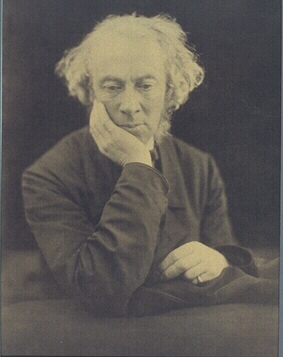Aubrey Thomas de Vere facts for kids
Quick facts for kids
Aubrey Thomas de Vere
|
|
|---|---|

Aubrey Thomas de Vere
|
|
| Born | 10 January 1814 Curraghchase House, Curraghchase, Kilcornan, County Limerick, Ireland |
| Died | 20 January 1902 (aged 88) Curraghchase, Kilcornan, County Limerick, Ireland |
| Occupation | Author |
| Notable works |
|
| Parents |
|
| Relatives |
|
| Alma mater | Trinity College, Dublin |
| Scientific career | |
| Influences | |
Aubrey Thomas de Vere (born January 10, 1814 – died January 20, 1902) was an Irish poet and a literary critic. He is known for his serious and religious poetry. He also wrote essays and plays.
Contents
Life of Aubrey de Vere
Aubrey Thomas Hunt de Vere was born in 1814 at Curraghchase House in County Limerick, Ireland. His father was Sir Aubrey de Vere, a baronet, and his mother was Mary Spring Rice. He was one of several children in his family. In 1832, his family officially changed their last name from 'Hunt' to 'de Vere'.
Early Life and Education
Aubrey was taught at home when he was young. In 1832, he went to Trinity College, Dublin. There, he studied the works of important thinkers like Kant and Coleridge. He was greatly influenced by his friend, the famous astronomer Sir William Rowan Hamilton. Hamilton helped him discover and admire the poets Wordsworth and Coleridge.
Travels and Influences
Later, Aubrey de Vere traveled to Oxford, Cambridge, and Rome. In Rome, he met and was strongly influenced by John Henry Newman, a very important religious leader. Aubrey also became close friends with the playwright Henry Taylor.
Poetry and Faith
Aubrey de Vere's poems are known for being very serious and showing strong religious feelings. His search for faith led him to join the Roman Catholic Church in 1851. He wrote many religious poems, especially in his book St Peters Chains (1888). For a few years, he taught at the Catholic University in Dublin.
The famous poet W. B. Yeats described de Vere's poetry as thoughtful and meditative. Yeats felt that de Vere's best poems were like "enchanted islands" in a calm sea of ideas.
Connection to Wordsworth
Aubrey de Vere greatly admired the English poet William Wordsworth. He even stayed at Wordsworth's home, which he called a great honor. For many years, he made a special trip each year to visit Wordsworth's grave. He continued this tradition until he was too old to travel.
Later Life and Legacy
Aubrey de Vere was a tall and thoughtful man. He was known for his polite and graceful manner. He remained mentally sharp even when he was very old. Many people considered him one of the most intellectual poets of his time. He was listed as an 'Author' in the 1901 census.
Aubrey de Vere passed away at Curraghchase in 1902 when he was 88 years old. He never married, so his family name, de Vere, ended with him. His nephew then took on the name.
Aubrey de Vere's Works
Aubrey de Vere wrote many different types of works. His most famous poems include:
- The Sisters (1861)
- The Infant Bridal (1864)
- Irish Odes (1869)
- Legends of St Patrick (1872)
- Legends of the Saxon Saints (1879)
He also wrote prose, which means regular writing that isn't poetry. His well-known prose works are:
- Essays Chiefly on Poetry (1887)
- Essays Chiefly Literary and Ethical (1889)
De Vere also wrote travel stories and two plays in verse. These plays were Alexander the Great (1874) and St Thomas of Canterbury (1876). While these plays had some good parts, critics felt they were a bit too long and lacked strong drama.
Some of his historical poems were once studied in schools in Ireland. These included The March to Kinsale and The Ballad of Athlone.
Literary Influences
In his own writings, Aubrey de Vere shared who influenced him. He said that the poet Lord Byron was his first inspiration. However, he quickly changed his mind when his father showed him Wordsworth's poem "Laodamia." He became a devoted follower of Wordsworth. De Vere's poetry often showed the same calm and thoughtful style as Wordsworth's.
His love for ancient Greek poetry also made his own mythological poems more dignified. A critic in 1896 said that de Vere's poetry was very lively and covered many ideas.
Some other works by Aubrey de Vere include:
- "May Carols and Legends of Saxon Saints" (1857)
- "Legends and Records of the Church and Empire" (1887)
- "Mediæval Records and Sonnets" (1898)
De Vere is also remembered for helping people learn about Celtic legends and Celtic literature. He helped start a movement called the "Celtic revival." This movement brought new interest to Irish stories and culture. His deep understanding of the Irish character and his retelling of old Irish epic poems were very important to this revival.
A collection of his best poems, called Selections, was put together by G. E. Woodberry in 1894.
See Also
- De Vere family

